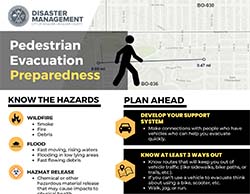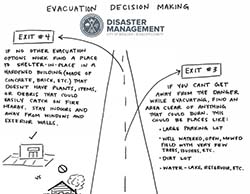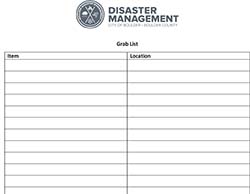Evacuation
When community evacuations are deemed necessary, local officials may notify you using one or more of the emergency alert methods used in Boulder County.
Local media may also provide valuable information regarding the evacuation process. The amount of time you have to evacuate will depend on the nature of the disaster, so be prepared to leave at a moment’s notice. You should have a plan for what items and supplies you would need to take with you should you have to leave with limited warning.
It’s important to consider the following if you receive an evacuation order:
- Modes of transportation – have one primary method of how you’ll get moving, and at least one back up method. For example, your primary method might be your vehicle, and your back up method might be arranging to ride with a neighbor or friend ahead of time should a disaster strike.
- Routes – during an evacuation roads may be impacted due to the disaster. Familiarize yourself with multiple routes around your area so that you can quickly navigate during a disaster.
- If you are in an area that has only one way in and out, consider evacuating prior to the evacuation order phase. For more on orders and alert terminology visit our Understanding Emergency Alerts (link back to Understanding Emergency Alerts page) page.
- Time needed – if you need additional time to mobilize, consider evacuating prior to receiving an order. You may want to consider leaving at the advisory or warning phase. To learn more about advisories, warnings, and alert terminology visit our Understanding Emergency Alerts
(link back to Understanding Emergency Alerts page) page. - Garages – if you have a garage and power is lost, consider how you would work through this. Consider moving your vehicle outside of your garage on days that may be high risk for power outages, or make sure you know how to open your garage door manually.
- To open a garage door manually, find the red pull cord attached to your garage door opener power box. Once you pull it, it will allow you to manually lift the door.
- Turn off utilities – shut off water and gas prior to evacuating if you have time to do so.



